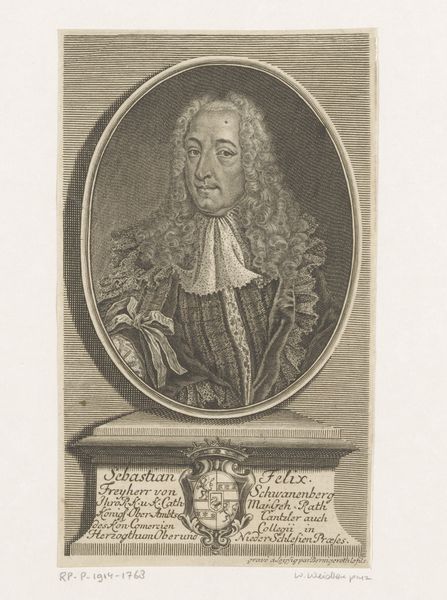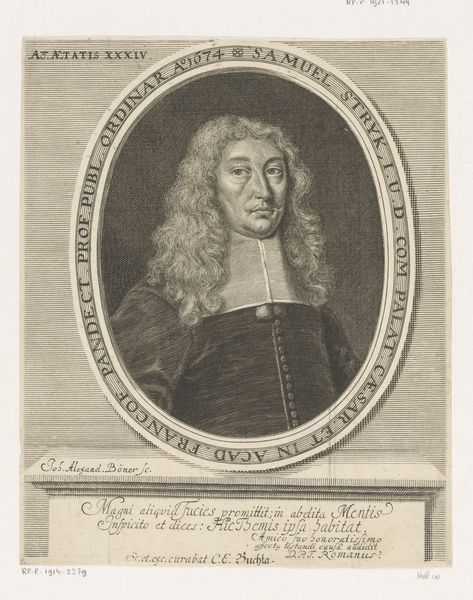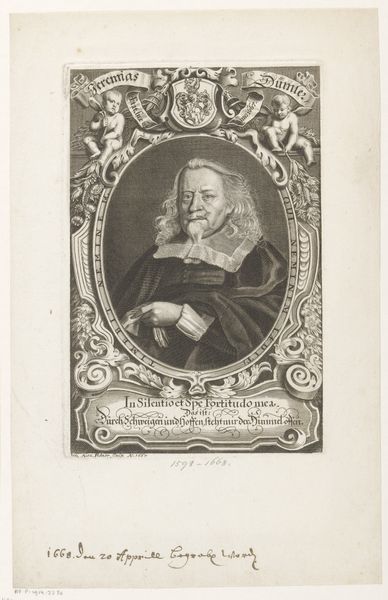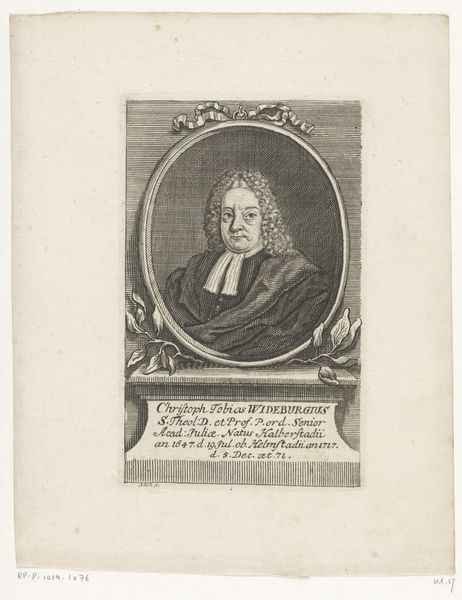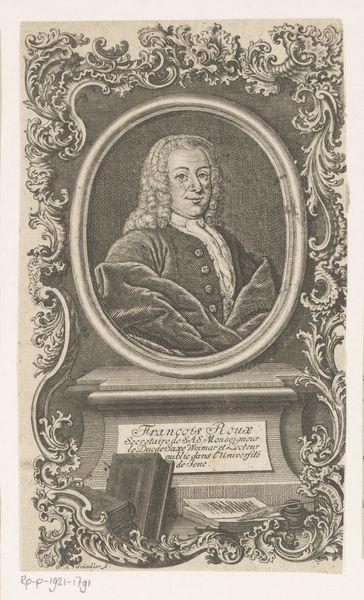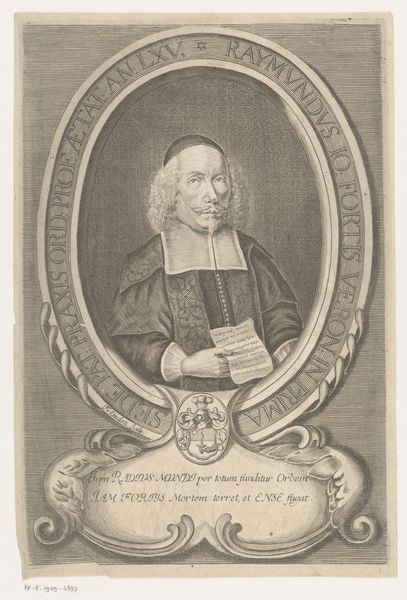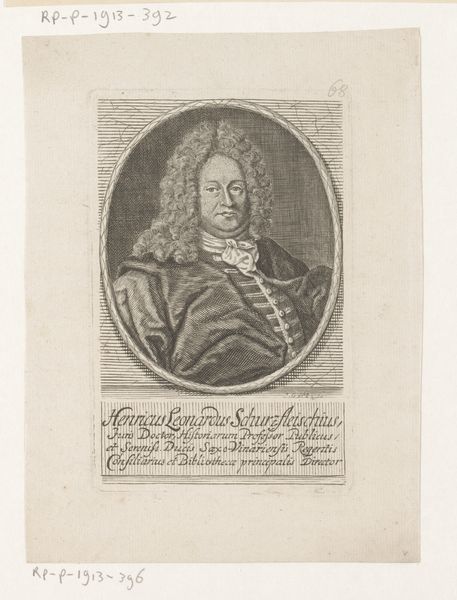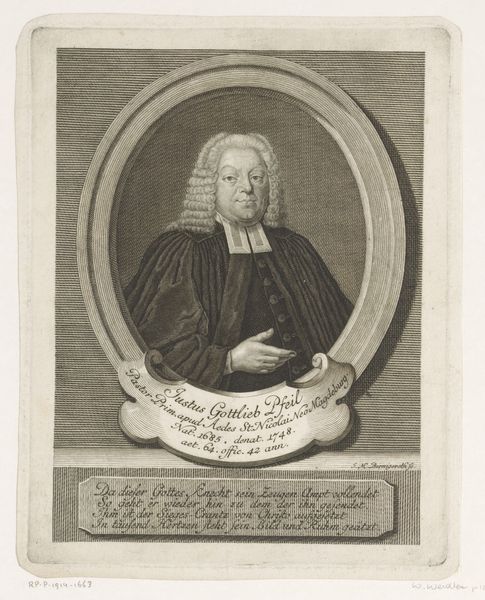
print, engraving
#
portrait
#
baroque
# print
#
old engraving style
#
history-painting
#
engraving
Dimensions: height 140 mm, width 88 mm
Copyright: Rijks Museum: Open Domain
Curator: Here we have Martin Bernigeroth's 1715 engraving, a portrait of Hieronymus Ambrosius Langenmantel, currently held in the Rijksmuseum collection. Editor: My first impression is of crisp lines and a somber, almost studious atmosphere. The precision suggests a highly skilled artisan working within a rigid, perhaps even oppressive, structure. Curator: Precisely! Engravings like this were crucial in disseminating images and ideas across Europe. It's not just a portrait; it's a carefully constructed representation intended to project Langenmantel's status and erudition as a Canon. Consider the implications of reproducibility in a society undergoing major shifts. Editor: And it is interesting to note how that dissemination was also a craft of labor. I'm curious about the physical act of carving those intricate lines into the plate— the sheer manual skill involved, compared to today’s mechanized printing. What was Bernigeroth's workshop like, what materials did he use, and how long would it have taken him to complete? Curator: Those are critical questions! We see this artwork also functioning as a piece of historical record, reflecting Baroque aesthetics and serving the specific goals of its subject and his social standing, we see the public role this artwork takes. Editor: It's more than a status symbol; it’s a tangible object born from specific material conditions. From the selection of the metal plate to the distribution of the final prints, labor is infused. These lines embody skilled work but also power structures of society and economic transaction of reproducible media of the day. Curator: Absolutely. The symbolism, embedded in his posture, attire, and even the lettering at the bottom, all reinforces this idea of carefully curated image in line with political and ecclesiastic concerns. Editor: The details, as well crafted as they are, invite scrutiny into the modes of production inherent in Baroque artistry and how they intertwine with a person's identity, especially through a mechanical medium like engraving. Curator: By recognizing the context of its creation, the print can become a great case study into 18th-century visual and socio-political dynamics. Editor: Right, it bridges realms of visual culture, modes of labor, and a tangible experience. It reveals something profound when we consider these various elements simultaneously.
Comments
No comments
Be the first to comment and join the conversation on the ultimate creative platform.
